Top 5 Korean Dishes: Doenjangjjigae (된장찌개)
Doenjangjjigae is one of Korea's representative traditional dishes, known for its deep, rich flavor and abundance of nutrients. In this article, we will explore the history, ingredients, cooking method, various variations, and cultural significance of doenjangjjigae.

1. History of Doenjangjjigae
The origins of doenjangjjigae can be traced back to doenjang, a traditional Korean fermented food. Doenjang is a paste made from fermented soybeans, and its history is believed to date back to the Three Kingdoms period. Stews using doenjang evolved throughout the Goryeo and Joseon dynasties, eventually developing into the form we know today. Doenjangjjigae has held a prominent position on Korean tables for a long time, cherished for its rich flavor and nutritional value.
2. Ingredients of Doenjangjjigae
The basic ingredients for Doenjangjjigae are as follows:
Doenjang: The main ingredient, playing a crucial role in determining the flavor of the stew.
Tofu: Adds a soft, mild taste.
Pumpkin (Hobak): Provides a sweet and soft texture.
Potato: Enhances the flavor of the stew.
Onion: Adds sweetness and enhances the overall flavor.
Green Onion (Pa): Adds a refreshing taste and aroma.
Garlic: Adds a strong aroma and flavor.
Korean Chili Powder (Gochugaru): Adds a slight spiciness.
Broth (Yuksu): A deep, flavorful broth made from anchovies and kelp.

3. Cooking Method for Doenjangjjigae
The cooking method for doenjangjjigae is relatively simple, but a few tips are essential for achieving the best flavor.
Prepare the Broth: Make a broth by boiling anchovies and kelp.
Prepare the Ingredients: Cut tofu, pumpkin, potato, onion, and green onion into appropriate sizes.
Dissolve Doenjang: Once the broth boils, dissolve doenjang into it.
Add the Ingredients: Add the prepared ingredients and bring to a boil.
Add Gochugaru: Add gochugaru to adjust the spiciness level.
Simmer: Cook until all ingredients are fully cooked.
Finishing Touches: Add green onion and garlic, simmer a little longer, and turn off the heat.
4. Variations of Doenjangjjigae
Besides the basic form, doenjangjjigae comes in various variations. Each household and region uses slightly different ingredients and methods, resulting in unique flavors. For instance, there's seafood doenjangjjigae, which adds seafood for a refreshing taste, and beef doenjangjjigae, which incorporates beef for a deeper flavor.
5. Cultural Significance of Doenjangjjigae
Doenjangjjigae is not just a dish but embodies Korean life and culture. The act of gathering around a table to enjoy doenjangjjigae together strengthens family bonds. Also, as a dish made using doenjang, a traditional Korean fermented food, it offers the health benefits associated with fermented foods.
Doenjangjjigae holds a deep historical and cultural significance as a representative Korean dish. Its simple ingredients and cooking method allow for a rich and flavorful experience, making it a beloved dish among many. Why not experience the taste and culture of Korea through doenjangjjigae? Making it yourself might deepen your appreciation for it.
While doenjangjjigae is a fantastic dish on its own, enjoying it with other traditional Korean foods creates a truly bountiful table. In the future, we plan to introduce a variety of Korean dishes like doenjangjjigae, sharing their flavors and culture with a wider audience.
Top 5 Doenjangjjigae Restaurants Recommended by Algorithm
1. Ttossuni Ne (또순이네)
Located in Seonyu-ro, Yeongdeungpo-gu, Seoul, Ttossuni Ne is renowned for its doenjangjjigae and tender sirloin steak. The doenjangjjigae, with its savory and deep flavor, is filled with chives and wild mustard, offering a delightful blend of ingredients.
Address: 16, Seonyuro 47-gil, Yeongdeungpo-gu, Seoul
Operating Hours: Daily 11:30 AM - 9:30 PM (Break Time 4:00 PM - 5:00 PM)
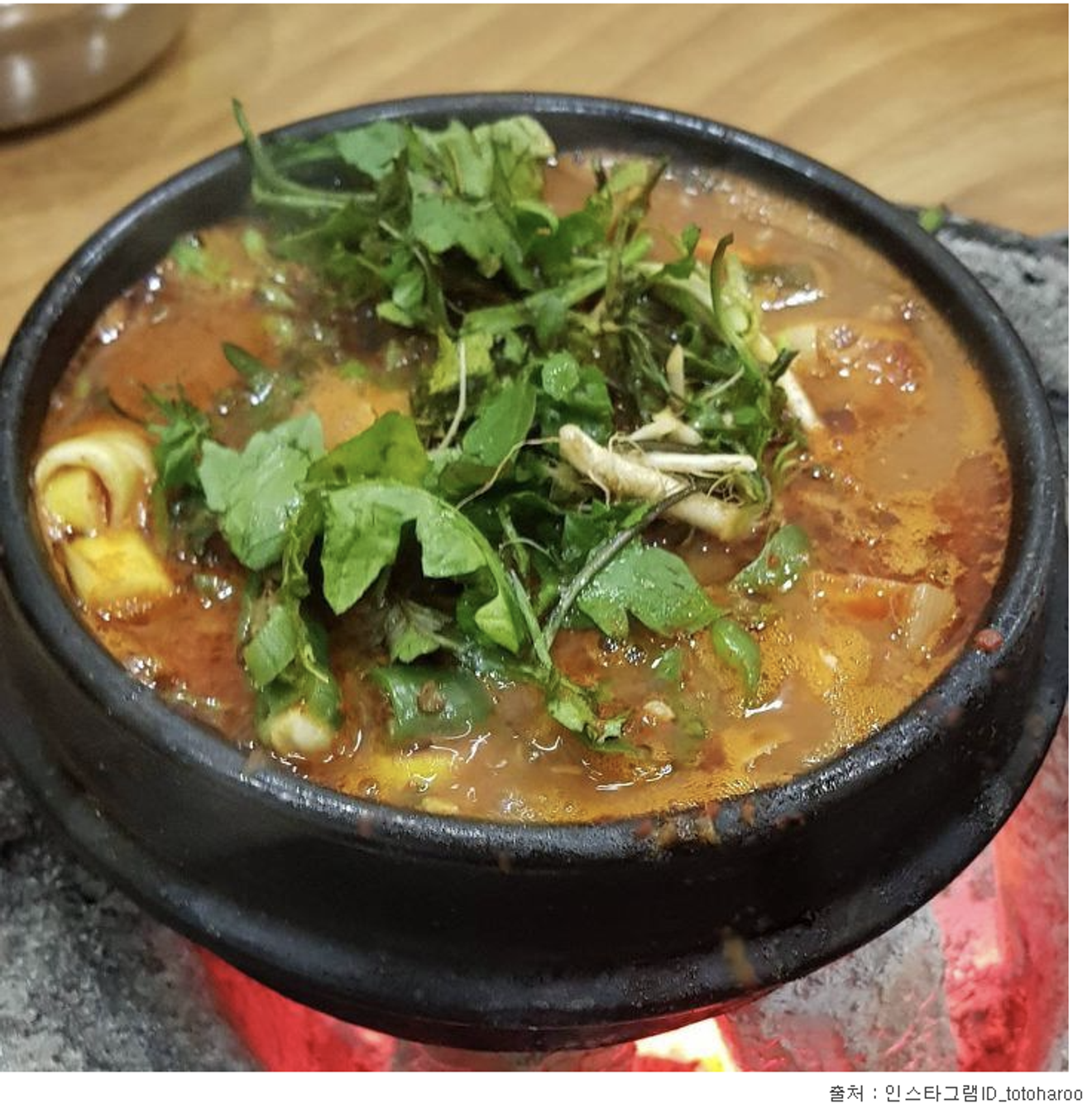
2. Sigol Yachae Doenjang (시골야채된장)
Located near Gangnam Station, Sigol Yachae Doenjang is a popular spot for busy office workers. The doenjangjjigae, made with well-fermented doenjang and a generous amount of various vegetables, is characterized by its deep and savory flavor. It is served with steamed egg and whole-grilled cod, making it a more substantial meal.
Address: 11, Gangnam-daero 69-gil, Seocho-gu, Seoul
Operating Hours: Daily 6:00 AM - 11:00 PM
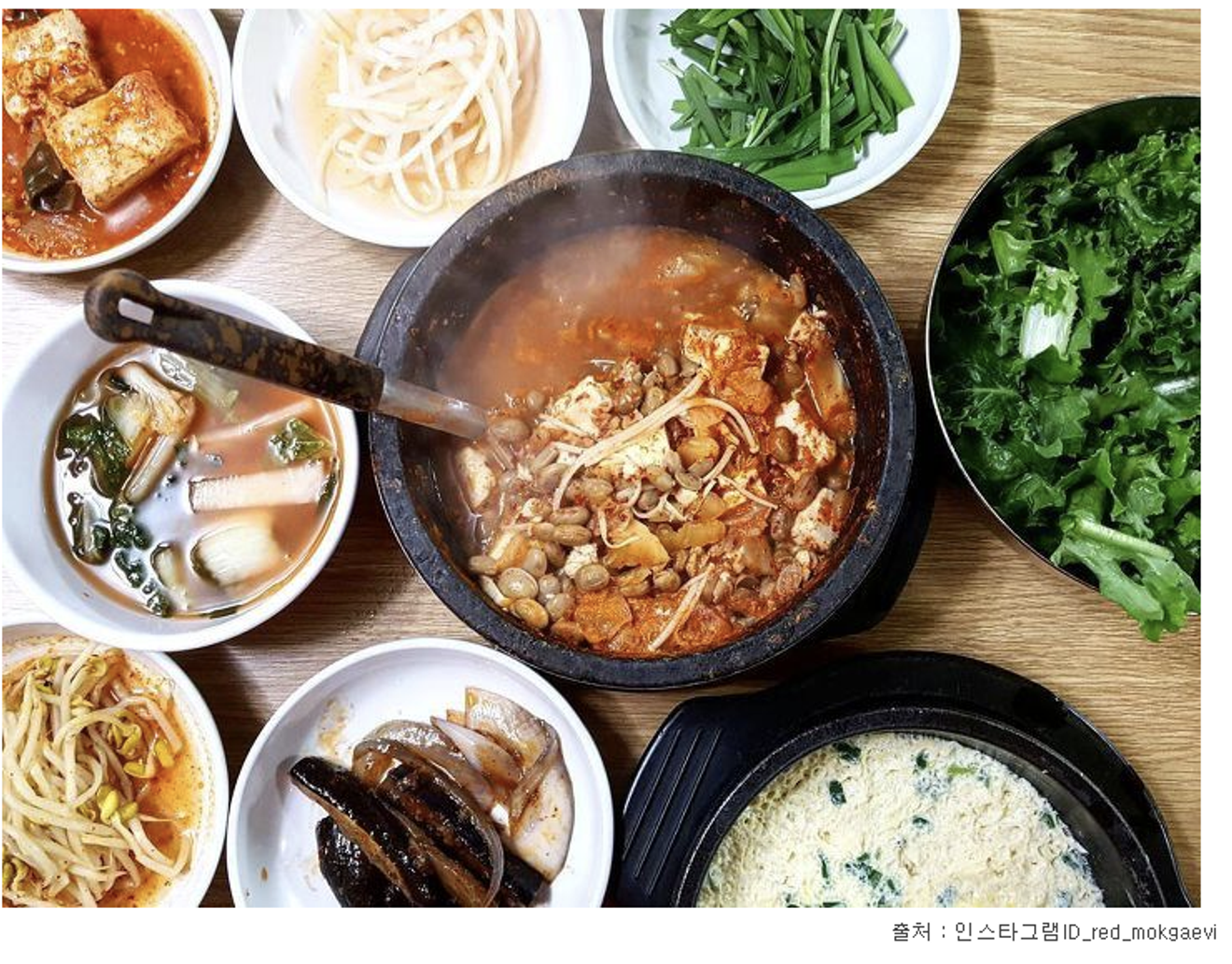
3. Dampuk Hwaro Doenjangjjigae (담뿍화로된장찌개)
Located near Yeoksam Station, Dampuk Hwaro Doenjangjjigae is a popular lunch spot. You can enjoy a thick doenjangjjigae along with stir-fried pork (jeukbokkeum). The combination of the stew with shepherd's herb (chamnamul) enhances its fragrant flavor.
Address: 5-9, Nonhyeon-ro 85-gil, Gangnam-gu, Seoul
Operating Hours: Mon-Fri 11:00 AM - 10:00 PM (Break Time 2:30 PM - 5:00 PM)
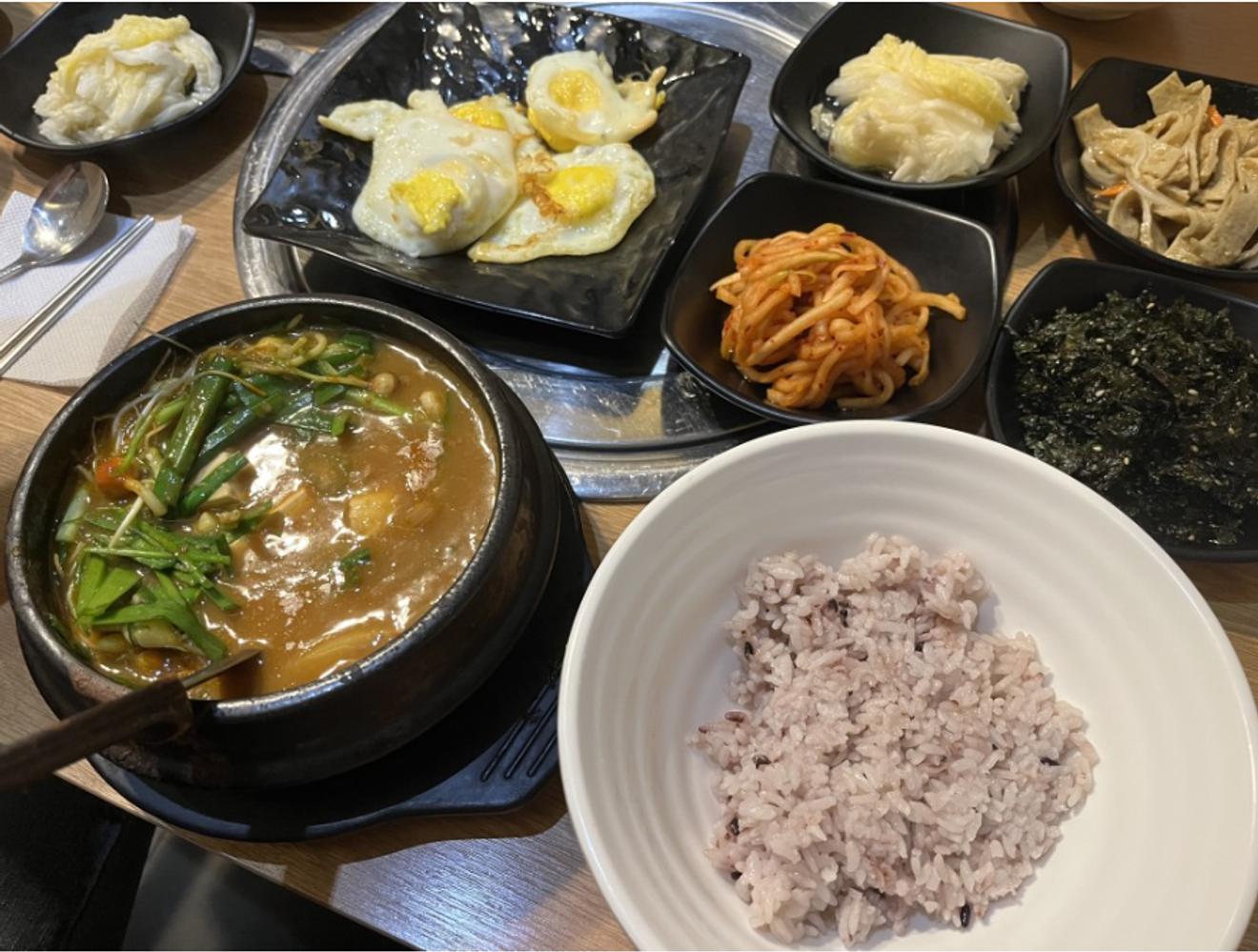
4. Sigol Cheongkukjang Doenjangjjigae (시골청국장된장찌개)
Located in Munrae-dong, Sigol Cheongkukjang Doenjangjjigae is a popular local favorite. The cheongkukjang and doenjangjjigae served with various side dishes boast a rich flavor and are known for their excellent value.
Address: 22, Seonyuro, Yeongdeungpo-gu, Seoul
Operating Hours: Mon-Fri 6:00 AM - 8:00 PM, Sat 6:00 AM - 2:00 PM
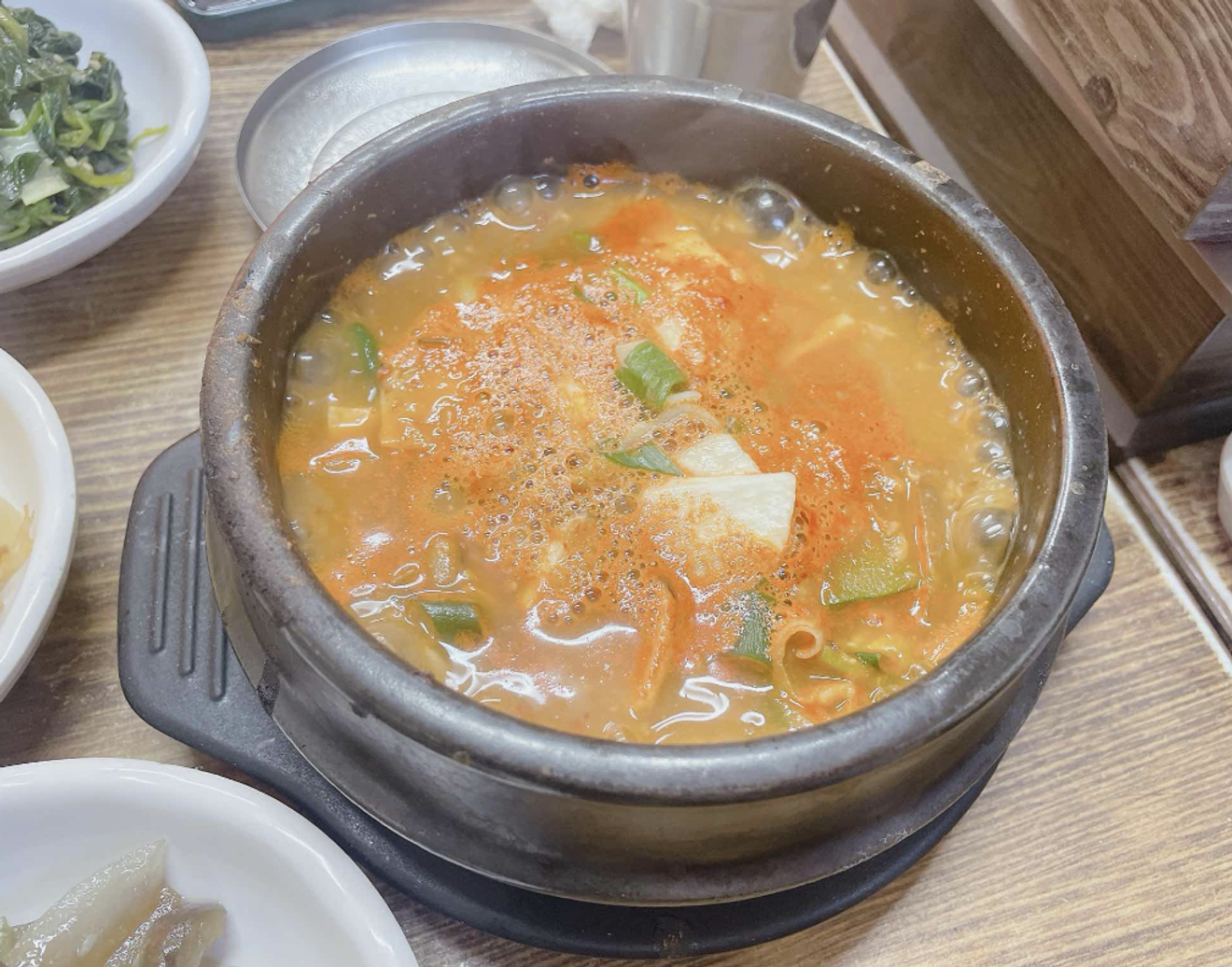
5. Doenjang Yesul Gwa Sul (된장예술과술)
Located in Gwancheol-dong, Jongno-gu, Doenjang Yesul Gwa Sul is famous for its strong doenjang (gang doenjang). Enjoying the savory strong doenjang with tofu, mixed with brown rice and perilla leaves, provides a hearty meal reminiscent of a grandmother's home-cooked meal.
Address: 20, Samil-daero 15-gil, Jongno-gu, Seoul
Operating Hours: Daily 11:00 AM - 11:00 PM
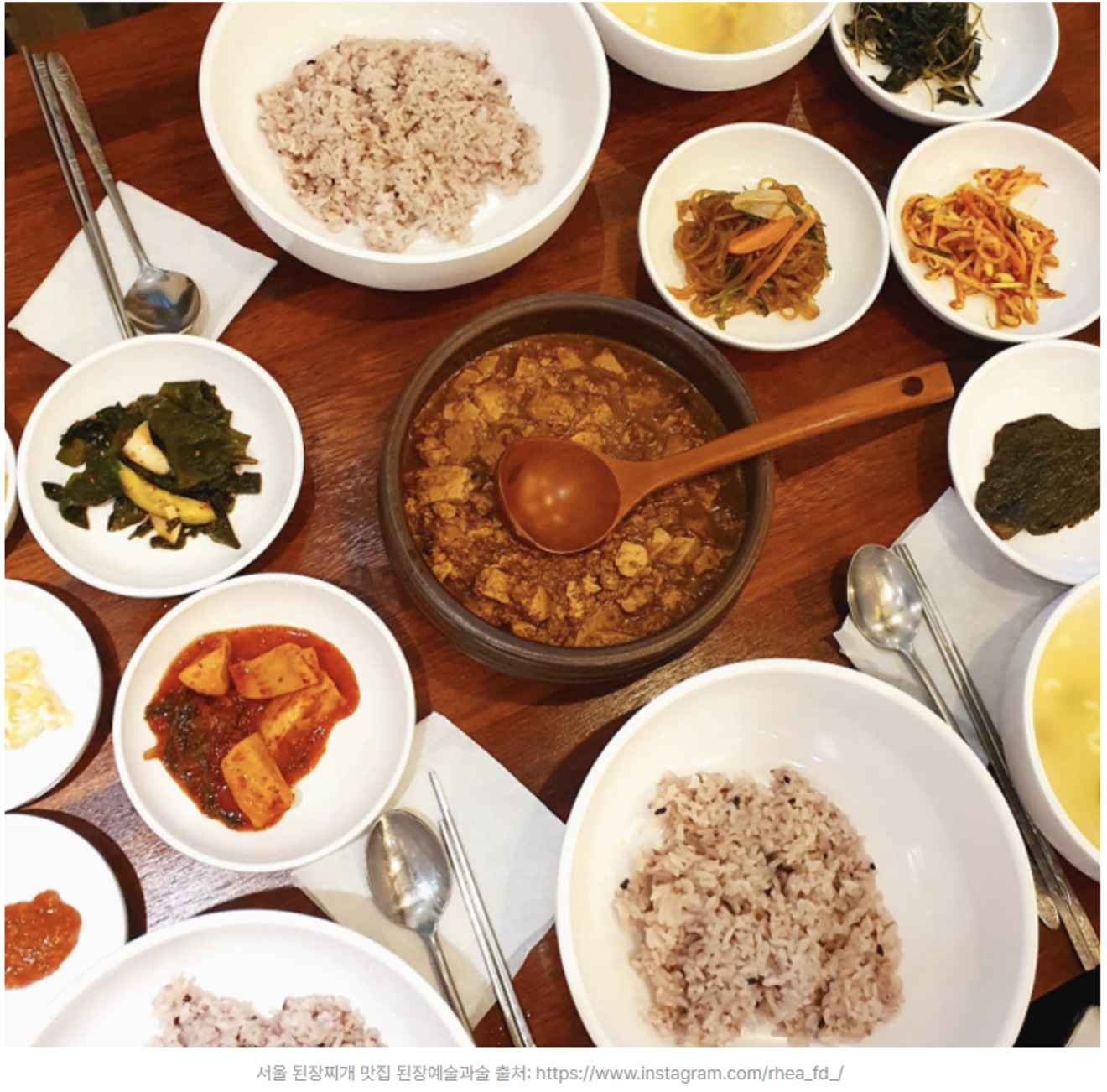
Comments0